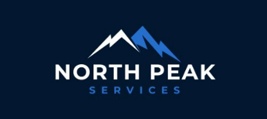Why Every Business Needs a Cash Reserve and How to Build One Without Losing Momentum
Let’s be honest, “Cash reserve” doesn’t sound particularly exciting.
It doesn’t scream growth, innovation, or market domination. But ask any business owner who’s faced a slow month, a late-paying client, or a surprise expense, and they’ll tell you the same thing, which is “having a cash reserve is one of the smartest decisions you can make.”
If you’ve ever had to choose between which bills to pay or paying a bill and chasing an opportunity, this article is for you.
Here’s why a cash reserve matters, how much you really need, and how to build one even if things are tight right now.
What Is a Cash Reserve?
A cash reserve is exactly what it sounds like. It’s a set amount of money that you put aside for unexpected expenses, temporary cash shortfalls, or sudden opportunities.
This is not the same as your regular operating account. It’s not for taxes, marketing, or day-to-day costs. It’s your safety net. Your backup plan. The money you hope you never need but are glad to have when you do.
Why a Cash Reserve Is Essential
1. Business is unpredictable
Even in stable industries, the unexpected still happens. Clients cancel contracts. Equipment breaks. Vendors raise prices. When the unexpected shows up, having a reserve gives you time to respond instead of panic.
2. Credit is not a safety net
Yes, a line of credit or a loan can help in a pinch. But those come with interest, paperwork, and approval delays. A reserve is already yours. It’s fast, flexible, and doesn’t come with strings attached.
3. Growth requires breathing room
A cash reserve isn’t just about protecting the downside. It gives you the freedom to say yes to new hires, new marketing strategies, or last-minute inventory buys when an opportunity presents itself.
How Much Should You Keep in Reserve?
The general recommendation is to keep enough cash to cover three to six months of essential expenses. That includes payroll, rent, utilities, insurance, software, and anything else you must pay to keep operating.
For many businesses, that number sounds intimidating. So here’s a more realistic approach: start by saving one month’s worth of operating costs. Once you reach that, build to two. Then keep going. The point is progress, not perfection.
Some businesses with seasonal swings might need more cushion, while those with steady monthly revenue might get by with less. It’s not about a magic number. It’s about protecting your momentum.
Where to Keep Your Reserve
Your reserve should live in a separate business savings account, not your checking account.
This keeps it out of sight and reduces the temptation to dip into it for non-emergency reasons. A high-yield savings account or business money market account can work well. You won’t earn much interest, but that’s not the point. The real value is having fast access when you need it most.
Just make sure it’s liquid. You don’t want to lock it into an investment that takes weeks to access, as that defeats the purpose.
How to Build a Cash Reserve from Scratch
1. Treat it like a monthly bill
Set a fixed amount to move into your reserve every month. Start small if you need to. Even five percent of your net income is a step in the right direction.
2. Create a target and break it down
If your goal is fifteen thousand dollars, divide it into manageable milestones. For example, save three thousand each quarter. That feels a lot more achievable than staring at the full goal.
3. Use windfalls wisely
Got a tax refund or a big client payment? Put a chunk of it straight into your reserve. It’s easier to set aside cash when it shows up all at once than to try and carve it out later.
4. Cut low-value expenses
Audit your recurring costs. Cancel anything you no longer use or need. Apply that freed-up money directly to your reserve account.
5. Automate the process
Schedule a recurring monthly transfer so you don’t have to think about it. Automation removes the decision-making and makes saving consistent.
When to Use Your Reserve (and When to Leave It Alone)
The whole point of a cash reserve is to use it when necessary. But not every shortfall or desire qualifies as an emergency.
Appropriate times to use your reserve might include:
A major, unexpected expense that you cannot cover with operating cash
A temporary revenue drop that threatens your ability to cover payroll or critical bills
An opportunity that aligns with your long-term goals and requires immediate funds
What you should avoid is tapping your reserve to cover poor planning, overspending, or routine seasonal slowdowns that could be budgeted for in advance.
In other words, your reserve is not a get-out-of-jail-free card. It’s a lifeline for truly disruptive moments.
To Wrap Things Up
A healthy cash reserve won’t make headlines. It’s not flashy. But it’s one of the most powerful tools a business owner can have.
It buys you time. It reduces stress. It turns emergencies into manageable situations and helps you make smart decisions from a place of calm instead of panic.
Start small if you need to. Keep it separate. Be consistent.
Because the difference between a business that survives and one that thrives often comes down to whether or not it had cash available when it mattered most.

